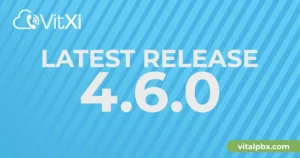Too Many Vendors, Too Many Headaches: The Case for PBX Consolidation in 2025
In today’s fast-paced business environment, communication is king. Yet, many organizations find themselves wrestling with a sprawling, disjointed web of communication tools and providers. If you’re an IT manager or business leader, the phrase “too many vendors” probably strikes a nerve, bringing to mind images of tangled contracts, frustrating support calls, and escalating costs. This vendor sprawl isn’t just an inconvenience; it’s a significant drain on resources and efficiency. The good news? There’s a powerful solution: PBX consolidation. As we move further into 2025, streamlining your business phone system isn’t just a good idea—it’s a strategic imperative for growth and sanity.
The traditional approach of patching together various communication services from different vendors – one for your phone lines, another for your PBX hardware, perhaps a third for video conferencing, and a fourth for messaging apps – creates a complex and often unmanageable ecosystem. This fragmentation leads to operational bottlenecks, security vulnerabilities, and a constant battle to get different systems to “talk” to each other. It’s time to simplify and regain control.
Understanding the Pain Points of Multi-Vendor PBX Environments
Juggling multiple vendors for your business communications might seem like a way to get the “best of breed” for each service, but it often culminates in a symphony of headaches. The allure of specialized providers can quickly fade when faced with the daily realities of managing such a fragmented setup. Let’s delve into the common challenges.
Spiraling Costs: The Hidden Fees of Vendor Juggling
One of the most immediate impacts of a multi-vendor strategy is on your bottom line. Each vendor comes with its own contract, billing cycle, support fees, and potential for price increases.
- Duplicated Overheads: You might be paying for similar administrative or infrastructure costs across multiple providers.
- Lack of Volume Discounts: Spreading your business thin means you miss out on potential volume discounts a single, comprehensive provider might offer.
- Integration Expenses: Getting disparate systems to work together often requires costly custom integrations or middleware.
- Time is Money: The sheer administrative time spent managing multiple relationships, invoices, and support tickets is a significant, often untracked, expense.
Think about it: one invoice, one contact point, one predictable monthly cost. This is a far cry from the financial juggling act many businesses currently perform. Consolidating your PBX and communication services can lead to substantial, quantifiable savings.
Operational Inefficiency: When Systems Don’t Talk
When your desk phone system, mobile communication app, video conferencing tool, and CRM are all from different vendors, true unified communication remains a distant dream. This lack of interoperability creates significant operational drag.
- Siloed Information: Customer interaction data might be trapped in one system, inaccessible to team members using another.
- Clunky Workflows: Employees waste time switching between applications, manually transferring data, or dealing with incompatible file formats.
- Inconsistent User Experience: Different interfaces and functionalities across tools can lead to a steeper learning curve and reduced user adoption.
- Missed Collaboration Opportunities: Without seamless integration, features like presence status, instant messaging, and easy call escalation become cumbersome.
A consolidated PBX environment, especially one leaning towards Unified Communications (UC), ensures that all your communication channels work in harmony, fostering smoother workflows and boosting overall productivity. For more on UC, check out VitalPBX’s guide to Unified Communications features.
Security Vulnerabilities: More Vendors, More Risks
Every additional vendor in your communication stack introduces another potential point of failure and a new attack surface for cyber threats. Managing security policies, updates, and compliance across multiple platforms is a Herculean task.
- Inconsistent Security Standards: Different vendors may have varying levels of security protocols and data protection measures.
- Complex Patch Management: Keeping track of and applying security patches for numerous systems is challenging and prone to oversight.
- Increased Data Exposure: Data flowing between un-integrated or poorly integrated systems can be more vulnerable to interception.
- Compliance Nightmares: Meeting industry-specific compliance standards (like HIPAA or GDPR) becomes significantly more complex with data scattered across multiple vendor platforms.
Centralizing your PBX under a single, reputable vendor allows for a unified security posture, simplified monitoring, and more robust data protection.
Support Headaches: The Blame Game
When a communication issue arises in a multi-vendor setup, who do you call? More often than not, it leads to the infamous “blame game,” where each vendor points fingers at the others, leaving you stuck in the middle.
- Delayed Resolutions: Pinpointing the root cause of a problem can take significantly longer when multiple parties are involved.
- Lack of Accountability: It’s difficult to hold any single vendor accountable when responsibility is diffused.
- Frustrated Users: Employees facing communication disruptions become unproductive and demoralized by slow support responses.
A single vendor for your PBX system means a single point of contact for support – one throat to choke, as the saying goes. This streamlines troubleshooting and ensures quicker resolutions.
Streamlining Communications: Advantages of a Unified PBX Solution
The decision to consolidate your PBX systems and embrace a unified approach isn’t just about mitigating pain points; it’s about unlocking significant strategic advantages. Moving to a single-vendor PBX solution in 2025 can transform your business communications from a source of frustration into a powerful enabler of efficiency and growth.
Significant Cost Savings with a Single PBX Vendor
Consolidation directly translates into reduced expenditure. Beyond eliminating redundant fees, a unified system offers economies of scale.
- Lower Total Cost of Ownership (TCO): Reduced licensing fees, hardware requirements (especially with cloud or virtual PBXs), and maintenance costs contribute to a lower TCO.
- Predictable Budgeting: A single, consolidated bill simplifies financial planning and reduces unexpected expenses.
- Optimized Resource Allocation: IT staff can focus on strategic initiatives instead of juggling multiple vendor contracts and support channels.
- Reduced Training Costs: Standardizing on a single platform means less time and money spent training employees on disparate systems.
According to a report by TechTarget on UC benefits, businesses often see a marked decrease in communication-related operational costs after consolidation.
Enhanced Productivity and Collaboration Through Integration
A unified PBX platform inherently fosters better teamwork and smoother individual workflows. When all communication tools are part of a cohesive system, magic happens.
- Seamless User Experience: Employees can access voice, video, messaging, and presence information from a single interface.
- Improved Call Handling: Features like intelligent call routing, auto-attendants, and CRM integration ensure calls reach the right person quickly.
- Boosted Mobility: Modern consolidated PBX solutions offer robust mobile apps, allowing employees to stay connected and productive from anywhere.
- Integrated Collaboration Tools: Built-in video conferencing, screen sharing, and file sharing capabilities facilitate teamwork without needing third-party applications.
Imagine your sales team effortlessly initiating a video call from their CRM contact record or your support team having full customer history pop up with an incoming call. This level of integration is a hallmark of a well-consolidated PBX.
Strengthened Security with Centralized PBX Management
As discussed earlier, multiple vendors multiply security risks. Conversely, consolidation centralizes and simplifies your security posture.
- Uniform Security Policies: Apply consistent security measures and access controls across all communication channels.
- Easier Compliance Management: Auditing and reporting for compliance purposes become far more manageable with a single system.
- Proactive Threat Monitoring: A centralized system allows for more effective monitoring and quicker response to potential security threats.
- Simplified Updates and Patching: Ensuring your communication system is always up-to-date with the latest security patches is easier with one vendor.
You can learn more about securing your VoIP systems by reading VitalPBX’s insights on VoIP security.
Simplified Support and Maintenance: One Point of Contact
The frustration of vendor finger-pointing vanishes with PBX consolidation.
- Faster Issue Resolution: A single support team understands the entire system, leading to quicker diagnosis and fixes.
- Clear Accountability: There’s no ambiguity about who is responsible for maintaining system uptime and performance.
- Proactive Maintenance: Good providers often offer proactive monitoring and maintenance, preventing issues before they impact users.
- Streamlined Updates & Upgrades: Implementing new features or system upgrades is managed centrally, ensuring a smoother rollout.
This streamlined support not only saves time but also significantly reduces stress for IT teams and end-users alike.
Planning Your PBX Consolidation Strategy for 2025
Embarking on a PBX consolidation project requires careful planning to ensure a smooth transition and to maximize the benefits. As you look towards 2025, a strategic approach will be key to transforming your communication infrastructure successfully.
Assessing Your Current Communication Infrastructure
Before you can build a better future, you need a clear understanding of your present state.
- Inventory All Systems: List every communication tool, service, and vendor currently in use. Include hardware, software, contracts, and associated costs.
- Identify Pain Points: What are the biggest frustrations with your current setup? Where are the inefficiencies and bottlenecks? Solicit feedback from users.
- Analyze Usage Patterns: How are your current tools being used? Which features are critical, and which are underutilized?
- Review Contracts: Understand the terms, renewal dates, and termination clauses for all existing vendor agreements.
This audit will provide a baseline and highlight the areas most in need of improvement.
Defining Your Business Communication Needs for the Future
PBX consolidation isn’t just about fixing current problems; it’s about future-proofing your communications.
- Identify Core Requirements: What are the must-have features for your business (e.g., call recording, IVR, mobile clients, video conferencing)?
- Consider Scalability: How do you anticipate your business growing in the next 3-5 years? Your new system must be able to scale accordingly.
- Factor in Remote/Hybrid Work: If your workforce is distributed, ensure the solution offers robust support for remote users.
- Integration Needs: What other business systems (CRM, ERP, helpdesk) does your communication platform need to integrate with?
Clearly defined requirements will guide your selection of the right consolidated PBX solution. For help with this, consider VitalPBX’s article on choosing the right PBX system.
Choosing the Right Unified Communications Partner
Selecting the right vendor is arguably the most critical step. Look for a partner, not just a provider.
- Comprehensive Feature Set: Ensure the vendor offers all the functionalities you need now and in the near future.
- Reliability and Uptime: Check their service level agreements (SLAs) and customer reviews regarding system stability.
- Security Credentials: Verify their security protocols, compliance certifications, and data protection policies.
- Support Quality: Evaluate their support responsiveness, expertise, and customer satisfaction ratings.
- Ease of Use and Management: The system should be intuitive for end-users and straightforward for administrators to manage.
- Flexibility and Customization: Can the solution be tailored to your specific business processes and workflows?
Migration and Implementation: A Smooth Transition
A well-planned migration minimizes disruption and ensures user adoption.
- Phased Rollout: Consider a phased approach, migrating departments or locations incrementally rather than an all-at-once switch.
- Thorough Testing: Before going live, conduct extensive testing of all features and integrations.
- User Training: Provide comprehensive training to all users to ensure they are comfortable with the new system.
- Clear Communication Plan: Keep all stakeholders informed throughout the migration process.
- Post-Implementation Support: Ensure your chosen vendor provides robust support during and after the transition.
A successful migration paves the way for reaping the full benefits of your consolidated PBX system.
VitalPBX: Your Partner in Streamlined Communications
When considering PBX consolidation, VitalPBX emerges as a compelling solution designed to address the very headaches caused by vendor sprawl. It offers a comprehensive, flexible, and powerful platform that can unify your business communications effectively.
Feature-Rich and Flexible: Tailored to Your Needs
VitalPBX isn’t a one-size-fits-all solution; it’s adaptable.
- Comprehensive UC Features: From advanced call routing, IVR, and call recording to voicemail-to-email, conferencing, and instant messaging, VitalPBX packs a punch.
- Add-on Modules: Extend functionality with specialized add-ons for call centers, hotel management (PMS integration), billing, and more, often eliminating the need for separate, niche vendors.
- Deployment Options: Choose between on-premise, cloud, or virtualized deployments to match your infrastructure strategy and budget.
- Hardware Agnostic: VitalPBX supports a wide range of SIP phones and gateways, giving you freedom of choice and potentially allowing you to reuse existing compatible hardware.
This flexibility means you can consolidate numerous communication functions under the VitalPBX umbrella, significantly simplifying your vendor landscape.
Scalability for Growth: A Future-Proof PBX
Your business isn’t static, and your PBX shouldn’t be either. VitalPBX is built to grow with you.
- Handles Increasing Users: Easily add new extensions and users as your team expands.
- Manages Growing Call Volume: Robust architecture ensures performance even as call traffic increases.
- Adapts to New Requirements: The modular design and ongoing development mean VitalPBX can adapt to evolving business needs and technological advancements.
Investing in VitalPBX is an investment in a communication system that won’t hold you back as you scale your operations in 2025 and beyond.
Proven Track Record and Strong Community
VitalPBX is trusted by businesses worldwide, and its active community is a testament to its reliability and the support available.
- Global User Base: A diverse range of organizations relies on VitalPBX for their daily communications.
- Active Community Forums: Get help, share tips, and learn from other VitalPBX users and developers.
- Regular Updates and Development: The VitalPBX team is committed to continuous improvement, regularly releasing updates with new features and enhancements.
By choosing VitalPBX, you’re not just getting software; you’re joining a supportive ecosystem dedicated to excellent business communication.
Your PBX Consolidation Questions Answered
Navigating the path to PBX consolidation can bring up several questions. Here are answers to some common queries to help clarify the process and benefits.
Q1: What exactly is PBX consolidation?
A: PBX consolidation is the process of streamlining your business’s phone system and related communication services by reducing the number of vendors and platforms you rely on. The goal is to move towards a single, integrated solution, ideally a Unified Communications (UC) platform, to manage voice, video, messaging, and other collaboration tools. This simplifies management, reduces costs, and improves efficiency.
Q2: How can consolidating PBX vendors reduce costs?
A: Consolidating PBX vendors can reduce costs in several ways:
* Lower subscription/licensing fees: A single vendor often offers bundled pricing or volume discounts compared to paying multiple individual vendors.
* Reduced hardware and infrastructure costs: Modern consolidated solutions, especially cloud-based or virtualized ones, can minimize the need for extensive on-premise hardware.
* Decreased administrative overhead: Less time spent managing multiple contracts, invoices, and support relationships.
* Elimination of redundant services: You might be paying for overlapping features from different vendors.
* Lower integration costs: A unified platform has built-in integrations, avoiding expensive custom development.
Q3: Is PBX consolidation a complicated process?
A: The complexity of PBX consolidation depends on the size of your organization, the intricacy of your current setup, and the solution you choose. However, with proper planning and the right partner, it doesn’t have to be overly complicated. A good vendor will guide you through assessment, migration, and implementation. A phased approach can also make the transition smoother.
Q4: Will PBX consolidation improve team collaboration?
A: Absolutely. Modern consolidated PBX systems often come with Unified Communications (UC) features like presence indicators (seeing if colleagues are available, busy, or away), instant messaging, video conferencing, and screen sharing, all within a single platform. This makes it much easier for teams to connect, share information, and work together, regardless of their physical location.
Q5: What are the security benefits of a single PBX provider?
A: Using a single PBX provider enhances security by:
* Centralizing security management: Applying and monitoring security policies becomes much simpler.
* Reducing attack surfaces: Fewer systems mean fewer potential vulnerabilities for attackers to exploit.
* Ensuring consistent security updates: It’s easier to keep one system patched and up-to-date than multiple disparate ones.
* Simplifying compliance: Meeting data security and privacy regulations is more manageable with a unified system.
Reputable providers also invest heavily in robust security measures for their platforms. For more on this, consult resources like the Cybersecurity & Infrastructure Security Agency (CISA) for general best practices.
Q6: Can I keep my existing phone numbers if I consolidate my PBX?
A: Yes, in most cases. The process is called number porting, and reputable PBX providers, including VitalPBX, will assist you in transferring your existing phone numbers to the new system. This ensures business continuity and avoids the hassle of informing all your contacts about new numbers.
Conclusion: Simplify, Save, and Scale with PBX Consolidation
The days of juggling countless communication vendors, each with its own quirks, costs, and complexities, are numbered. In 2025, the strategic advantage lies in simplification and integration. PBX consolidation is no longer a niche IT project; it’s a fundamental business decision that directly impacts your bottom line, operational efficiency, security posture, and employee productivity.
By moving away from a fragmented multi-vendor environment towards a unified communication solution, you can:
- Slash unnecessary costs and gain predictable communication spending.
- Boost productivity and collaboration with seamlessly integrated tools.
- Strengthen your security with centralized management and consistent policies.
- Eliminate support headaches with a single point of accountability.
The headaches of vendor sprawl are real, but so are the tangible benefits of consolidation. It’s time to take control of your business communications and transform them into a streamlined, powerful asset.
Ready to escape the vendor vortex and discover the power of a unified PBX solution?
Explore VitalPBX today. Download our software and experience firsthand how easy and effective business communication can be. Take the first step towards a simpler, more efficient future for your organization.




